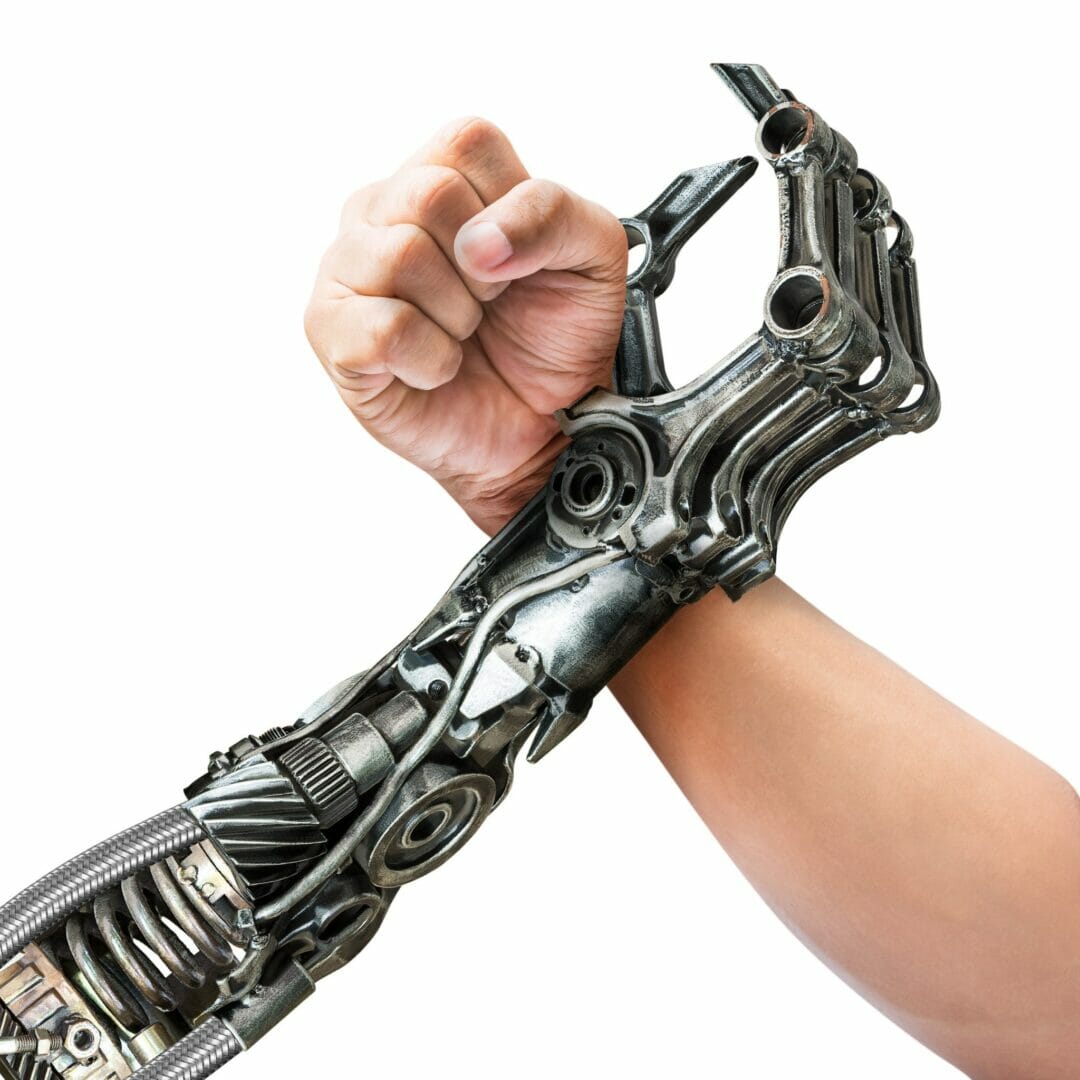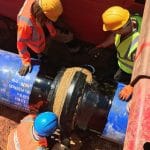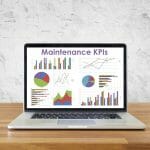Why do automated machines fail? Deterioration caused by not maintaining basic standards and lack of operative training, stress as a result of poor design at the outset, and weaknesses, such as poor quality parts, tend to be the main factors say three automation experts.
Representing the end user viewpoint is Geoff Hann (MIET), Engineering Manager at Morrisons Thrapston manufacturing site, while David Jahn, Director at Brillopak looks at maintenance from a machine build perspective, and Dan Rossek from Omron reviews the latest technology that’s helping to streamline and implement a strategy of predictive maintenance. The three experts share their tips on how to maximise Overall Equipment Effectiveness (OEE) on food production pick and pack lines by instilling a workplace culture of pride in asset care and explain why having the basics in place can lead to greater success during the transition towards Industry 4.0.
Over the last decade, food produce environments and packhouses have realised the productivity benefits that can be gained by being less reactive to maintenance tasks and adopting a proactive approach to asset care. “From an end-user’s perspective, a key driver behind this change has been the growing acceptance of OEE as a measure for a company’s productivity,” says Omron’s Dan Rossek.
Brillopak’s David Jahn agrees saying: “Machine technology is just one aspect of automation. In a marginal business like fresh produce packing, if a production line stops or slows down to accommodate a hold up further up the line, that eats into productivity and therefore profits. The whole process, from weighing and flow-wrapping produce to loading it into a case for palletising must run seamlessly in order to optimise OEE. Operatives need to feel confident and familiar with equipment. Chaotic layouts, factory clutter and workforce hostility towards automation are probably the most common reasons that production gets disrupted.”
For Geoff Hann, greater productivity and machine availability starts with getting the entire workforce, from machine operatives to managers, engaged with 5S.
Originating from Toyota in Japan the late 1950s, the Kaizen-inspired 5S pillars creates a sense of ownership and empowerment among the workforce while introducing better housekeeping standards says Geoff. “Being orderly, clean and standardised in your approach to automated machinery care is the foundation of a good asset care and maintenance programme,” he emphasises.

The lifespan of automated equipment will vary by application and depends how hard each machine is worked and how well it’s looked after, notes David. “Maintained correctly, and providing flexibility has been built into the initial design, an automated packing system could last over 20 years,” he suggests.
Plant that’s poorly maintained will likely breakdown more frequently and impact quality, as well as productivity and OEE. Breaking the cycle of reacting to emergency maintenance tasks starts with changing the mindset of your factory workforce.
With a lifetime experience in asset care, Geoff shares his tips on how to engage with engineers and machine operatives. “Always start by sorting the area. Get the team to red tag all the stuff you don’t need and create a space spares and change parts, lubricants and tools. So much time is wasted searching for a specific spanner or hex key during scheduled and emergency maintenance. Simple actions like returning tools to the shadow board alleviates frustration and saves on valuable machine downtime.”
Next, identify the equipment maintenance task that can be performed by non-maintenance personnel, e.g. changing worn parts, lubrication and lock off procedures. “By increasing their mechanical knowledge operatives start to take ownership of their machine and feel empowered.”
Geoff also advises measuring each line’s OEE at the start of training, although he recommends holding off divulging this data to trainees. He explains: “Hearing a poor OEE score at the start is disheartening and can switch people off. Reward and recognise the improvements, using initial data such as running time, products packed per hour and how many can be sold. This is your quality gauge and a true benchmark to measure improvements against. Releasing the earlier data in comparison to the new data emphasises the significant change that has been achieved”
Don’t try to engage your entire factory workforce at once advises Geoff. Instead, pick your middle production line. “People on either side become part of the halo effect and that’s how you gain wider enthusiasm for asset care. They see what colleagues are doing, see the positive results they have achieved and want some of the action.”
Whether it’s brand spanking new or a decade old, if a machine is dirty or workspace cluttered, the workforce will care less. Giving plant equipment a lick of paint, addressing any leaks or dribbles and ensuring it looks in tip top condition becomes the visual standard, which passes from shift to shift suggests Geoff. It’s that old adage “A tidy workspace; A tidy mind”.
Scoring and auditing each line at the start and end of each shift is a good habit to get into, ensuring consistent standards once introduced are maintained. Defects and issues can be documented during each handover, along with corrective actions. “This helps to prevent a blame culture and ensures people take accountability for their actions,” says Geoff.
Failure to resolve a machinery fault or production bottleneck issue swiftly can inadvertently set automation project up to fail, claims David. “It’s psychological. If operatives fear that their jobs are on the line and then see that a machine isn’t functioning properly, it almost certainly creates a sense that it’s doomed to fail. So they won’t even try and resolve an issue. In order to curtail this, it’s imperative that operatives feel involved at the outset of scoping out the specifications for a new automated installation.”

From automation adversaries to OEE champions
Fact is, machines do go down. What matters is how easy and quickly it can be fixed and put back on line. That’s the ultimate measure of OEE. And it’s where quality of design thought and component selection comes in.
When a machine goes wrong the first intervention is usually by an operator. They will most certainly be under pressure to get the line up and running again and unskilled operative can wield plenty of damage. David explains: “The need to do something often overrides the long term implications of poking at the problem until it disappears. The answer is to provide a simple operator interface which clearly identifies the source and cause of the problem, a clear and simple way to stop and restart the system the system and full training in what can go wrong and how to fix it easily under pressure.”
The investment in OEE starts way before the machine build, says David. “Because operatives see the day-to-day production issues they are a great source when it comes to pre-empting common issues. Leveraging this insight, such as all the SKUs, sizes and layer patterns at the outset is important as it factors in all the glitches that may interrupt production, plus engages with the frontline teams. Rather than being automation adversaries, they become your OEE champions.”
Geoff concurs saying that in order for production workforce engagement and asset care to be sustainable, it requires a holistic approach. “We have to consider the entire automation picture, including the impact on people’s jobs, changing mindsets, investing in skilled operatives who take ownership of valuable machine assets and rewarding them for their efforts. Asset Care is a wonderful example of continuous improvement and optimising Total Cost of Ownership.”
Accelerating the shift towards self-monitoring
By looking at the things that might fail, and addressing those aspects proactively, there can be a risk that key components – mechanical and electrical – might be replaced before they get to the end of their useful lifespan.
End users and machine builders may consider installing technology tools, enabling the machine to monitor its own components and operations, and provide more accurate and useful information relating to production trends and component problems. Self-diagnostic tools, like Omron’s condition monitoring function blocks are an important step towards the Industry 4.0 concept of the Smart Factory.
Dan highlights several of the self-diagnostics facilities available today that can assure higher availability and therefore improved OEE. “Some functions are easy to implement: variable speed drives, for example, have long offered the ability to monitor the current to the motor, with a gradual increase in required current indicative of developing problems within the mechanical power train. Then there are temperature sensors, vibration monitors and other add-on condition monitoring products that can all be used as part of a predictive maintenance strategy. The key to effective condition monitoring is hidden in the automation architecture, enabling vertical integration of all the components of the system by means of field networks like EtherCat or IO Link, which allows seamless data transfer between all the field devices and fast and effective realisation when a problem occurs.”
Brillopak uses tools like this to create simple, intuitive maintenance HMIs that pinpoint exactly where on the line a fault has occurred. “To optimise OEE, speed is always of the essence. Standard on our pick and pack systems, rather than codes the HMI delivers a simile error message directing operatives to the exact place so they can resolve it without having to go through multiple steps or calling an engineer over. It might, for example, be a simple thing like a door not being locked.”
The company also uses cabling systems to connect machines to Omron function blocks. These function blocks make it simple to monitor the condition of devices such as pneumatic cylinders, sensors and servo drives/motors that can cause intermittent machine stoppages. “It’s a very accessible and visual way to monitor machine issues and make a rapid diagnosis,” adds David. “If the plug light isn’t flashing green, the operative can immediately determine where the issue lies, thus optimising availability.”
The Morrisons manufacturing site where Geoff works uses similar visual aids to identify downtime and efficiency data, which will ultimately be grabbed from the control system. “The benefit of machine data is there’s no bias – it’s a pure, clean and cannot be manipulated. Making it a true real time report of what is happening on your production line. We take the data, act on it and run the report again. This is central to continuous improvement.” Data like this is also used to calculate the financial loss to the business in real time, which production managers can use to drive improvements in OEE.
Dan adds: “With accessible enabling tools such as these, end users benefit from increased capabilities, but without the complexity or incurring significant programming effort. It means that sophisticated functionality such as advanced self-diagnostics can be implemented as standard as part of the machine design process, helping to deliver a real OEE and asset care advantage.”
Summarising, David says: “It’s always challenging in a fast moving food production environment to predict what the future landscape is going to be. But by building in the machine flexibility and giving end users access to simple visual aids to measure data, identify faults and equipping people with the skills to solve issues in the fastest possible time without causing further damage or disruption, you are on the way to increasing machine availability.
“There are multiple pitfalls than can sink an automation project. You can have the most advanced Industry 4.0-compatible technology in the world. Yet if the end user is too scared to approach the machine or nonchalant about asset care, your competitive advantage and OEE ambitions will be swiftly sunk.”
Likening Industry 4.0 to the Asset Care pyramid, Geoff adds: “There’s no end game. To achieve World Class Organisation perfection is the Holy Grail quest. Even the most advanced factories will continuously be setting new improvement targets and striving for the next goal.”
All three spokespeople conclude that regardless of the size of a production and packing plant, the journey to Industry 4.0 starts and ends with enforcing rigour in asset care combined with a comprehensive grasp of all the potential maintenance issues that could disrupt production.









